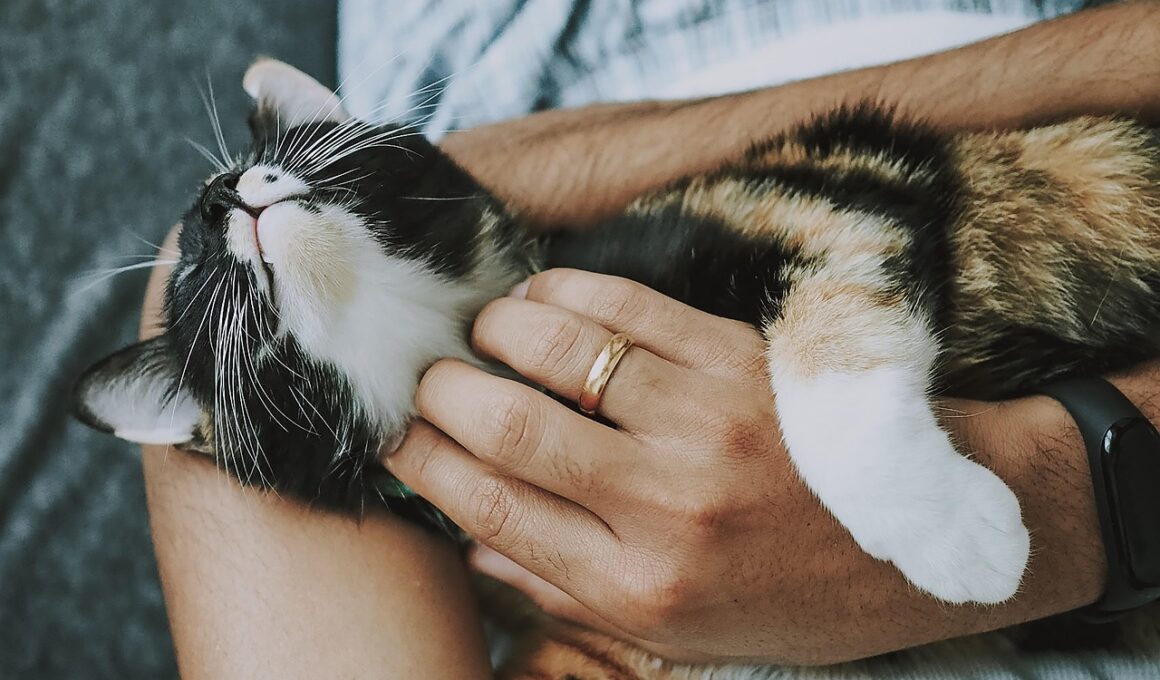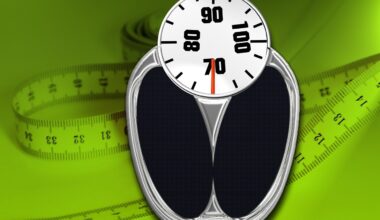How To Recognize Unusual Dental Anatomy in Cats
Understanding feline dental anatomy is crucial for any cat owner. Cats possess a unique dental structure that may vary widely among different breeds. Recognizing variations in this structure can significantly influence their overall dental health. Typically, cats feature 30 permanent teeth, which include incisors, canines, premolars, and molars. Each of these teeth serves a specific purpose: for instance, incisors are used for nibbling, while canines play a role in capturing prey. The position and layout of these teeth allow for efficient eating habits, tailored to a cat’s carnivorous diet. However, some cats may exhibit developmental anomalies, such as malocclusion or missing teeth. Malocclusion refers to misalignment of teeth which could lead to discomfort. Additionally, occasionally, certain breeds may inherit dental issues related to their lineage, so it’s vital for owners to be aware of these predispositions. Furthermore, routine dental check-ups are advisable for early detection of potential issues. Regular veterinary visits ensure better management of dental problems, ensuring a healthy mouth and preventing future complications in your feline friend.
When observing your cat’s dental health, monitoring gum health is essential. Healthy gums are typically pink and free of inflammation, while swollen or red gums may signal periodontal disease. This condition can lead to severe problems if ignored, such as tooth loss or systemic infections. It is vital to inspect your cat’s mouth regularly, looking for signs of tartar buildup that may indicate poor oral hygiene. If you notice excessive drooling or changes in eating habits, this could mean your cat is experiencing dental pain and should be evaluated by a veterinarian. Owners often overlook the importance of preventive care and home dental hygiene practices, such as using dental treats or daily tooth brushing, which collectively assist in maintaining good oral health. Exposure to a variety of toys can also promote better tooth and gum health; some toys can help scrape plaque from teeth naturally. Consulting your vet for recommendations on safe and effective dental products is advisable. Being proactive in caring for your cat’s dental health can provide significant long-term benefits, ensuring their happiness and quality of life remains optimal as they age.
Another area to focus on is the cat’s bite. A normal bite occurs when the upper and lower jaws align correctly, allowing teeth to interdigitate comfortably. Abnormal bite patterns can occur due to various factors, including genetics and trauma. Owners should observe if their cat has difficulty chewing or if they only use part of their mouth when eating, which may indicate dental discomfort. A common problem, particularly in older cats, is resorptive lesions, where the body starts breaking down its teeth. This condition can cause pain and may require immediate veterinary intervention. Another good practice is to be aware of behavioral changes, including increased aggression or withdrawal, as these can relate to mouth pain. Whenever there are signs of unusual behavior, the underlying cause could be dental-related issues that need professional assessment. Routine veterinary dental check-ups are essential for early detection, allowing for timely treatment. Owners should inquire about dental X-rays during these visits, as they help reveal hidden problems beneath the gum line that may otherwise go unnoticed. Keeping a watchful eye on these aspects ensures your cat maintains a joyful, fulfilling life.
Signs of Dental Problems in Cats
Recognizing the signs of dental issues in cats is crucial for timely intervention and treatment. Cats are often good at hiding their pain, making it challenging to identify if they are suffering from dental problems. One common sign many owners see is bad breath, which can be an indicator of periodontal disease or other oral health issues. Other visible symptoms include changes in their eating patterns; if your cat is avoiding dry food or exhibiting reluctance while chewing, it might suggest dental pain or discomfort. Some may show signs of excessive drooling, especially when they have dental problems. Furthermore, regularly inspecting your cat’s mouth may reveal troubling signs such as broken, discolored, or loose teeth. These signs should be taken seriously and warrant a visit to the veterinarian. Swelling around the mouth or loss of appetite can also serve as red flags indicating underlying issues. It’s vital to have an open communication line with your veterinarian regarding these symptoms, and regular dental exams can help catch issues before they escalate further into more severe problems, which ultimately affects your cat’s overall health.
Many cat owners often underestimate the importance of preventative dental care. Regular dental cleanings, either at home or through a professional, can have significant long-term benefits for your cat’s health. Cats that receive routine dental cleanings are less likely to develop periodontal disease, ensuring healthier gums and a longer retention of teeth. One of the most common dental issues in cats is gingivitis, which can be reversed with proper care and hygiene practices. Additionally, using dental treats and toys designed for oral health can assist in maintaining cleaner teeth and fresher breath. Most importantly, getting your cat accustomed to dental care from an early age can make future dental hygiene practices easier. If your cat resists, consider positive reinforcement techniques, associating cleaning with treats or playful sessions. Education is key, as understanding the significance of cat dental anatomy provides insightful guidance on how to approach dental care. By prioritizing your cat’s dental health, you’ll improve their quality and longevity of life significantly. In doing so, you are ensuring their happiness and vitality for years to come.
Cats, depending on their breed, may also exhibit unique dental characteristics or predispositions. Certain feline breeds, such as Persians and Siamese, are more susceptible to specific dental anomalies, including malocclusion or crowded teeth. Therefore, awareness of your cat’s breed-related dental issues can enhance your preventative care strategy. Geographical and environmental factors might also play a role, potentially affecting dental health and quality. By monitoring your cat’s mouth over time, you can gather crucial information to discuss during vet visits. Furthermore, maintaining a diet rich in essential nutrients contributes significantly to overall oral health, promoting strong enamel and gums. Consulting with your vet about the best food types for your cat can yield better dental results. Adequate hydration is equally important, as it aids in maintaining softer tissues in the mouth. Overall, recognizing specific dental characteristics can lead to more meaningful preventative care. Regular vet tips on how to maintain your cat’s dental health could lead you to discover additional strategies to protect and maintain an optimal environment for your pet, ensuring their dental anatomy remains in great shape throughout their lifetime.
Conclusion: The Importance of Cat Dental Care
Caring for your cat’s dental health is undeniably crucial. Understanding cat dental anatomy provides you with foundational knowledge necessary for spotting abnormal signs and taking precautionary action. Regular dental check-ups coupled with home care can be your first line of defense against many dental diseases. Speaking with your veterinarian about your cat’s specific needs can help tailor a dental care regimen that is effective. Additionally, being proactive about recognizing signs of dental problems can lead to timely treatment, which ultimately contributes to a better quality of life. Cats suffering from dental issues may experience pain, leading to behavioral changes and affecting their overall health. Therefore, investing time and effort into maintaining their dental hygiene is definitely worthwhile. Establishing routines forms trusting bonds with your feline friend while keeping their oral health in check. Beyond aesthetics, good dental care translates to improved general health, ensuring your cat has a healthier, happier life. Remember that as a cat owner, you play a crucial role in your pet’s welfare, and recognizing potential dental anomalies can make a significant difference.
In conclusion, properly understanding and caring for your cat’s dental hygiene can greatly enhance both their health and happiness. Cats may exhibit unexpected changes in their dental anatomy, and recognizing these can assist in early diagnosis and treatment. From maintaining a proper diet to regular vet visits, every action you take contributes significantly to your cat’s well-being. Educating yourself on different breeds and their predispositions can help tailor your approach to dental care. Consistency in home dental care, alongside professional check-ups, fortifies a robust preventive strategy against dental diseases. Not only does this ensure their teeth remain healthy, but it also allows for a better quality of life overall. Engaging play and innovative toys designed for dental health can create a fun atmosphere while promoting better oral hygiene. Maintaining awareness of their tooth condition and behavioral patterns will enhance how you manage their health. You are empowered by knowledge to seek veterinary help when needed swiftly. As a responsible pet owner, prioritizing dental health is a gradual journey, but the rewards of a healthy, happy cat will surely follow from diligent care.


